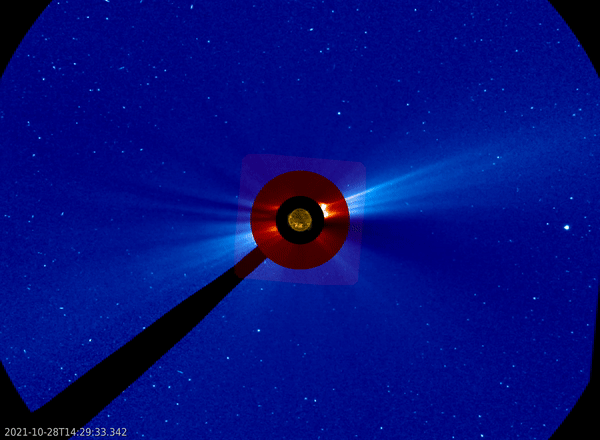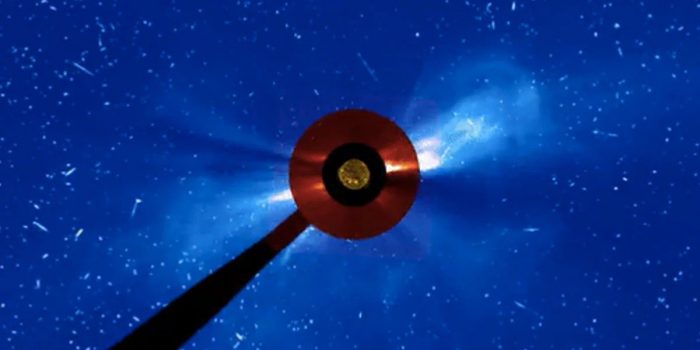In a remarkable and unsettling discovery, scientists have observed an enormous solar eruption in 2021 that stands out as a groundbreaking event. For the very first time, this solar eruption was simultaneously detected on Earth, the Moon, and Mars, shedding light on the potential radiation hazards faced by deep space travelers during such occurrences.
The vast and potent forces of nature often exceed our human scale of understanding. On October 28, 2021, an immense coronal mass was ejected from the Sun with such magnitude and energy that it defies easy description. This ejected mass, composed of gas, plasma, and highly charged particles, expanded across a wide expanse of the inner solar system, spanning from Earth to Mars. At that time, Mars was situated a staggering 250 million kilometers (155 million miles) away from our home planet.
This extraordinary event was observed through an array of spacecraft, including the ExoMars Trace Gas Orbiter (TGO), Curiosity Mars rover, Chang’e-4 Moon lander, Lunar Reconnaissance Orbiter (LRO), CROPIS Earth orbiter, Solar Orbiter, SOHO, and BepiColombo.

The eruption’s potency was such that it even penetrated Earth’s protective magnetic shield, registering on the planet’s surface in what scientists term a “ground level enhancement.” These instances are relatively infrequent, with only 73 recorded since observations commenced in the 1940s.
This event holds significant interest for scientists due to forthcoming crewed missions into deep space, particularly to the Moon and Mars. Outside the sheltering confines of Earth’s atmosphere and strong magnetic influence, astronauts become vulnerable to the hazardous radiation released by solar flares and coronal eruptions. These radiation storms possess the capacity to administer lethal radiation doses within a mere couple of weeks following exposure. A notable solar eruption took place in August 1972; fortunately, it occurred between the US Apollo 16 and 17 missions, preventing harm.

However, as we look ahead to future deep space missions, the dependence on vigilant monitoring of solar activity becomes paramount. Spacecraft must be equipped with shielded radiation shelters to offer astronauts a haven in the face of danger. Even within the relatively safeguarded environment of the International Space Station, essential compartments like sleeping quarters and the kitchen are fortified with thick walls to address potential radiation emergencies.
This event underscores not only the perils encountered by spacefarers but also the vulnerabilities experienced by those residing on Earth. Had the solar flare been directed straight at our planet, the consequences could have mirrored those of the Carrington Event in 1859. This monumental eruption struck Earth head-on, unleashing stunning auroras and triggering an electromagnetic tempest that wreaked havoc on the global telegraph network, even sparking fires in telegraph stations.
This historical precedent raises the unsettling prospect of the potential impact on contemporary power grids and worldwide communication systems, which span entire continents. It is thus no surprise that there is a growing call to fortify and shield these critical points of vulnerability.


